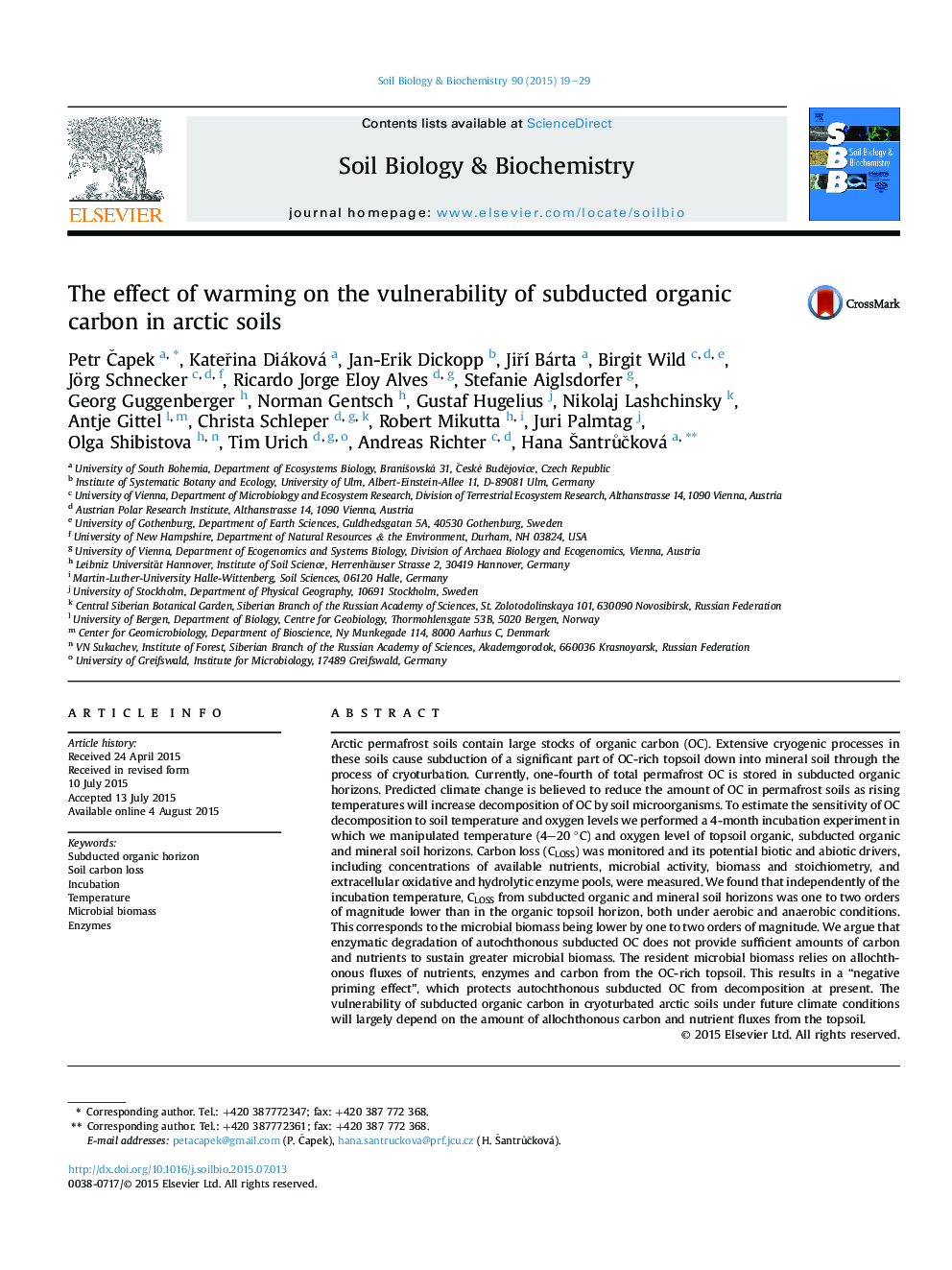| Article ID | Journal | Published Year | Pages | File Type |
|---|---|---|---|---|
| 2024374 | Soil Biology and Biochemistry | 2015 | 11 Pages |
•Temperature sensitivity reflected thermodynamics of aerobic or anaerobic microbial metabolism.•Subducted organic carbon decomposition was low due to low microbial biomass.•Microbial biomass preferentially uses allochthonous resources.•No effect of organic carbon quality on temperature sensitivity of carbon loss was observed.•Subducted organic carbon is stable.
Arctic permafrost soils contain large stocks of organic carbon (OC). Extensive cryogenic processes in these soils cause subduction of a significant part of OC-rich topsoil down into mineral soil through the process of cryoturbation. Currently, one-fourth of total permafrost OC is stored in subducted organic horizons. Predicted climate change is believed to reduce the amount of OC in permafrost soils as rising temperatures will increase decomposition of OC by soil microorganisms. To estimate the sensitivity of OC decomposition to soil temperature and oxygen levels we performed a 4-month incubation experiment in which we manipulated temperature (4–20 °C) and oxygen level of topsoil organic, subducted organic and mineral soil horizons. Carbon loss (CLOSS) was monitored and its potential biotic and abiotic drivers, including concentrations of available nutrients, microbial activity, biomass and stoichiometry, and extracellular oxidative and hydrolytic enzyme pools, were measured. We found that independently of the incubation temperature, CLOSS from subducted organic and mineral soil horizons was one to two orders of magnitude lower than in the organic topsoil horizon, both under aerobic and anaerobic conditions. This corresponds to the microbial biomass being lower by one to two orders of magnitude. We argue that enzymatic degradation of autochthonous subducted OC does not provide sufficient amounts of carbon and nutrients to sustain greater microbial biomass. The resident microbial biomass relies on allochthonous fluxes of nutrients, enzymes and carbon from the OC-rich topsoil. This results in a “negative priming effect”, which protects autochthonous subducted OC from decomposition at present. The vulnerability of subducted organic carbon in cryoturbated arctic soils under future climate conditions will largely depend on the amount of allochthonous carbon and nutrient fluxes from the topsoil.
Graphical abstractFigure optionsDownload full-size imageDownload as PowerPoint slide
